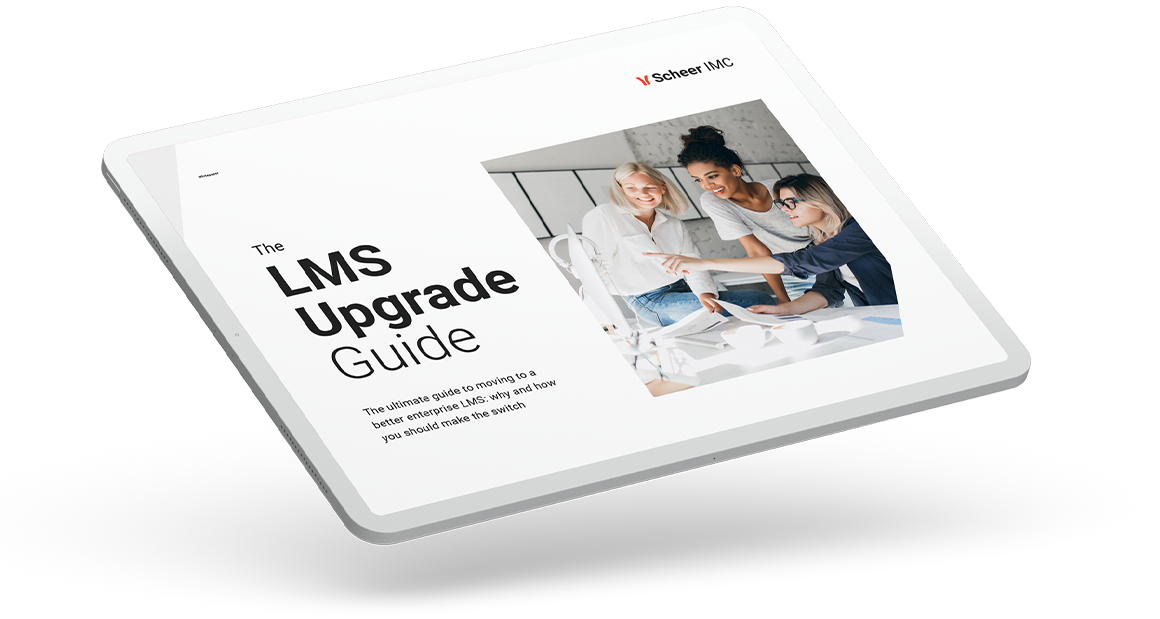
The 2025 LMS Upgrade Guide
Get your copy!
As a proven industry leader trusted by global enterprise, we’re passionate about learning – and so are our customers.


With hundreds of learning management systems (LMS) on the market today, deciding which one is right for you can be a complicated process. A good Request for Proposal (RfP) can simplify your decision making process by starting off with a training needs and features checklist.
Your choices can then be whittled down to a shortlist of LMS solutions that meet your specific criteria, with a final decision based on which provider you most like and trust.

A request for proposal or RfP is a document put together by the client and sent to potential learning management system providers in order to start the conversation about suitability and generating a quote.
A good RfP will contain information about the organisation and its elearning goals, the number of people (sometimes including external partners and supply chain as well as employees) to be trained, existing technology infrastructure to be integrated into, and any other LMS needs and constraints.
LMS providers who feel they can meet these criteria can then send a proposal, and the client can form a shortlist of providers to progress conversations with, and from whom to make a final choice.
One of the key benefits of an LMS request for proposal is that it ensures a level of objectivity in the procurement process. By starting with a checklist of essential, then nice to have features, the client can be more assured of suitability in a learning platform, rather than being overly swayed by slick sales presentations.
Before talking to a vendor, you can define your essential LMS requirements, before going on to list those that would be a bonus but that you may be willing to forego depending on price or strengths in your must-have criteria.
It’s really important to identify which criteria are truly essential to making an LMS work for your organisation, regardless of bells and whistles in nice to have areas. These LMS priorities will help to ensure the project does not fail.
Does your project have a strict timescale and / or budget? If you have hard limits to work within, by making these clear within your RfP you can avoid any time-wasting discussions if a vendor simply can not meet them. It also prevents time and budget creep once a project is underway.
Because the RfP is an up-front piece of work that can be sent to multiple vendors (and there really are hundreds to choose from), you will usually save time overall because you are not having to repeat yourself in initial email and telephone conversations. You can also avoid conversations with and presentations from companies that can not meet your needs.
Your document should have 3 broad RfP components, which are:
Let’s go into each of these sections in some more detail:

This should be a brief (one page should suffice) intro to your project and touch on what you are looking for and why.
What is your current training solution and what is it you’re looking to add / change / improve?
It should include the name and contact information for your project lead so that the vendor can ask any follow-up questions.
It should also include a deadline for the project so that vendors who can not work to your timescale can quickly self-eliminate. Include your timeline for receiving proposals and making a final decision on your vendor.
While you don’t need to go into detail on your company history, its founders etc (by all means link to this background info online), helpful information will include your company’s industry, regulatory environment, number of employees to be trained now and down the line, and geography - especially important if there’s likely to be a multilingual component.
This is where you get into the detail of what you need from a new LMS and can be much longer than the project overview if you have put together a good list of requirements having had consultations across all your stakeholder groups.
This will be much more numbers-based and touch on:
If you are relatively new to LMS features or you are replacing a very outdated system, you may be fuzzy on potential functionalities within the ideal platform, especially when it comes to terminology.
Feel free to talk here about what you need to achieve with the learning platform if you’re not sure how to define the feature that would make it happen.

It’s rare that large organisations will want a learning platform that operates in isolation these days. LMS integrations with existing HR software such as Workday or SAP, a CRM like Salesforce, and other tools managing employee data can save a great deal of time spent on learner admin.
It can also improve overall business performance by increasing knowledge sharing across your organisation. Define your existing people software where integration could make life easier.
Define what you would like to receive back from the vendor. Any experienced LMS provider will have existing templates that they work with and which are often pre-populated to an extent, but you can still request information in a format that suits you.
You may want to request an initial one-page summary of their solution that encapsulates what they can deliver and when, and to what budget. This will make it easier to discuss proposals with your peers and other stakeholders without having to go into the fine detail.
As an LMS buyer, very important information to receive from the vendor includes:
Buying an LMS can be a complicated process - especially when you need to factor in your possible future training needs in addition to your immediate requirements.
By putting together a detailed LMS RfP, you can help to ensure that your procurement will be objective and evidence-based, helping you to avoid costly mistakes and disappointment.
Separate genuine must-haves from nice-to-have features, and you can ensure you meet the needs of all your stakeholders, and that any additional features simply make the new platform more enjoyable and more useful for your business as a whole.
As imc Learning has decades of experience delivering on the training needs of some of the world’s best-known brands, if you’d like to have a conversation about your own elearning project, feel free to contact us for an informal chat.

How much does a Learning Management System cost? And which will appear after the implementation? We share some insights and explain, what these questions have in common with buying a house.

In this FAQ we explain the purpose and benefits of a headless Learning Management System. Learn more about headless LMS...